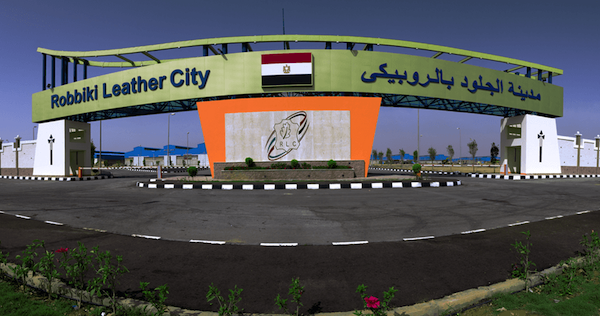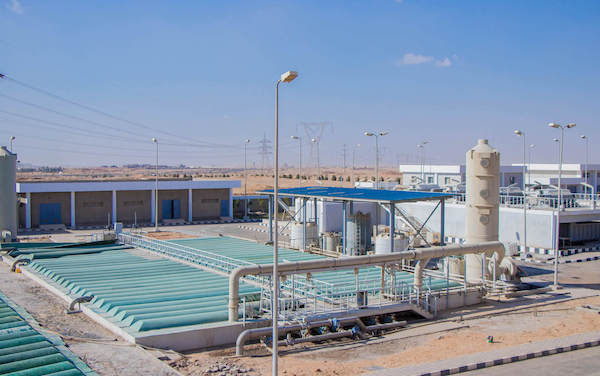7 October 2022
Leather is known to have been produced in Egypt since, at least, the fourth dynasty of ancient Egypt also known as the “golden age” of the country. Leather was produced for both domestic consumption and for export and was used for many different purposes, including the making of footwear, armor, clothing, and as a writing material.
Today, the combined leather tanning and leather goods industries represent the fifth largest industrial sector in Egypt in terms of the number of direct employment, number of companies and tanneries as well as of small enterprises and workshops. Egypt’s livestock wealth is estimated, according to the General Authority for Veterinary Services, at 18 million heads. Local hides and leather available for tanning are estimated at 123 million square feet, according to the Industrial Modernisation Center (IMC).
In the old days, tanneries were scattered randomly all over the country, including in residential areas and were a major source of pollution. However, since 2016, in accordance with the Egypt Vision 2030 program, industrial clusters have started to emerge. One of them is the Robbiki Leather City (RLC), which was featured as part of the Egypt Pavilion at the APLF Dubai.

Photo source: Cairo for Investment and Development
“Robbiki Leather City demonstrates the country’s efforts to develop the leather industry,” explains Amany Riad Elaasser, Manager of Robbiki Leather City at the Ministry of Trade and Industry. “It represents Egypt’s experience in establishing a specialized complex for leather industries with the aim of becoming a hub for tanning and leather manufacturing in the Middle East and Africa,” she adds.
With three planned distinctive and interconnected phases covering the leather industry manufacturing value chain and its by-products, the Robbiki Leather City is not only one of the most important national projects in Egypt, but also the largest Eco-Industrial cluster specialised in the leather industry in the Middle East and Africa and one of a kind project and hub in the region, according to Elaasser.
It is located in 10th of Ramadan, a first-generation new urban community, and one of the most industrialised, in the Sharqia Governorate, which is considered part of Greater Cairo. It was founded in a bid to attract foreign and local capital with the intent of providing job opportunities for the country’s youth, as well as move people away from the Nile Valley to ease the stress on existing infrastructure and reduce congestion.
The cluster’s location serves its investors in minimizing transportation time and costs to and from international and local destinations and is well connected to transport infrastructure and international ports.
Plug and play factories
The city’s infrastructure includes water supply, sewers, an electrical grid and telecommunications and is connected to two water purification plants which aim is to reduce waste from the city and increase the sustainability of the overall project.

Photo source: Cairo for Investment and Development
“These eco-friendly features enable tanners to apply and obtain certification such as the Leather Working Group (LWG)”, explains Elaasseer. One of the first tanneries to have obtained the LWG is the Sarg Tannery, also present at APLF Dubai.
“The Robbiki Leather city offers a one stop shop like location, providing business with a myriad of services that can boost leather production capabilities, such as testing, prototyping and export assistance,” describes Elaasser. “Everything is designed so that companies only have to move in and plug and play”.
Currently in its Phase one, the project has attracted 151 tanneries including 40 factories producing blue and gelatin.
Phase two aims at attracting companies producing chemicals.
Phase three is dedicated to attract foreign investments and value added industries such as the manufacture of footwear and leather products for export or domestic use. The third phase also allows the establishment of the headquarters of international companies to increase export opportunities.
According to the Egyptian Ministry of Trade and Industry, the quantity of national export leather has increased by 30% since the Robbiki Leather City became operational. Export destinations include Italy, India, Spain, the United States as well as Pakistan.
“Participating in APLF in Dubai has enabled us to showcase the project and attract potential foreign investors”, concludes Elaasser.
We bring leather, material and fashion businesses together: an opportunity to meet and greet face to face. We bring them from all parts of the world so that they can find fresh partners, discover new customers or suppliers and keep ahead of industry developments.
We organise a number of trade exhibitions which focus on fashion and lifestyle: sectors that are constantly in flux, so visitors and exhibitors alike need to be constantly aware both of the changes around them and those forecast for coming seasons.